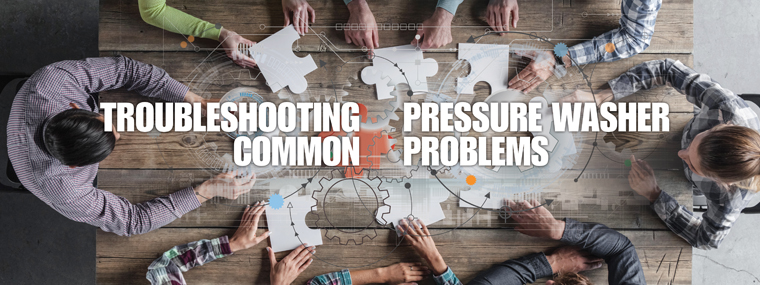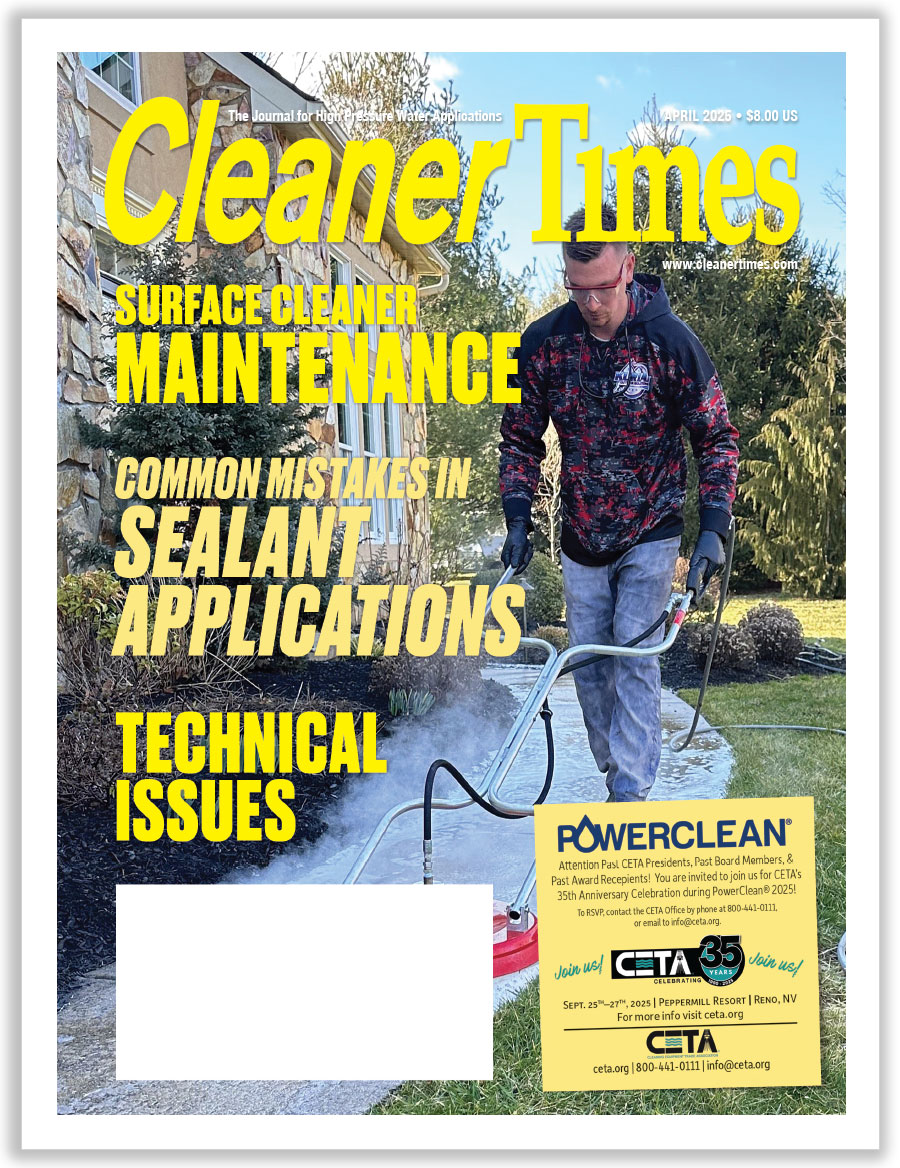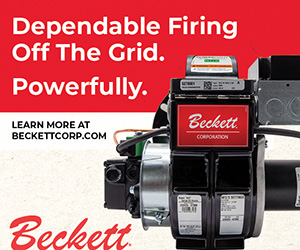
Troubleshooting Common Pressure Washer Problems
By April Hirsch / Published March 2017

Telegraph and telephone line repairmen of the late 19th century may have been the first troubleshooters. Or, the moniker troubleshooter may be a derivative of an older formulation, trouble hunter, an armed guard of some sort—say at a frontier campsite. The etymology of troubleshooter is muddled.
Yet we all know what it means to troubleshoot. It’s something we do a lot of in the 21st century as we keep our electronic devices, software, and apps current and functioning. In fact, contractors ought to be as adept at troubleshooting common pressure washer problems as they are texting a customer.
Being able to troubleshoot issues—either before they happen or while they are still minor—simplifies a contractor’s life by saving time and money. Con-sequently, contractors are always open to tips from colleagues and other industry experts. To contribute to that knowledge base, we solicited some advice.
Here, three experts on pressure washers respond to our questions, sharing some great tips on how to troubleshoot common pressure washer problems. They are Dennis Black, president of McHenry Pressure Cleaning Systems Inc. in Frederick, MD; Jim O’Connell, president of Hotsy Pacific in Modesto, CA; and Mylan L. Williams, general manager/sales of Hy-flo Equipment Co. in Pittsburg, KS.
Cleaner Times (CT): Is there one pressure washer problem that seems to occur more than any other?
Black: It is difficult pointing out a top problem. I would have to select insufficient inlet water volume. This includes insufficient supply, restricted water filters/screens, too small a diameter or too long a supply hose, or vacuum leaks in supply plumbing, lines, or fittings.
O’Connell: Related to gas engines or diesel burners, the most common problem we see is contaminated fuel, either from a dirty fuel can or from water in the fuel. Engines and burner components need clean, fresh fuel to operate properly and efficiently. Pressure washers are typically used for cleaning projects and then sit idle for periods of time. They also do not get fueled until the next use, when someone grabs whatever vessel is available to add fuel to the systems. It can be dirty or even used for other purposes, so the fuel gets contaminated, and the unit has a running or a burning issue.
Williams: The most common pressure washer problem we see at our company is a loss of pressure. The most common cause of a loss of pressure is leaving the trigger off for an extended period of time, allowing the bypass water to get too hot. Once you exceed the temperature rating of the packings in the pump, pressure loss occurs.
CT: Is there a top tip you would give regarding how to begin to assess a malfunction in a pressure washer?
Black: We usually tell customers to start by checking the following three things: Check for proper inlet flow/volume, proper electrical service (on electrical units), and unrestricted
flow on pressure side (clogged nozzles or fitting).
O’Connell: I have taught our technicians to always do a complete visual and operational inspection of the machine prior to working on any unit. A large percentage of the time you can diagnose a problem or at the very least determine where to start by taking a few minutes to fully inspect the unit. Look for the simple things first. For instance, low psi—check the nozzle; no burn—check the fuel tank for fuel; no water from the nozzle—look for the water supply; won’t run—check the electrical supply or gas tank, etc.
Williams: We always start with a conversation with the end user to get a feel for the performance of the washer up to the point of failure.
CT: Is there one type of pressure washer problem that is very difficult to identify and consequently is often misidentified?
Black: Usually electrical control problems are the most difficult. Diagnosing and finding these can be difficult and time consuming.
O’Connell: We see electrical issues as the most troublesome, and customers and technicians alike tend to condemn the electric motor when most often it is not the problem. In our industry when we have electric machines, it is imperative they are supplied with adequate electrical power. The United States has many different voltages available, but not all manufacturers make the units to run on these multiple voltages. High or low voltage to the machines will cause damage to controls, wiring, and motors. It will also greatly affect performance. We have trained our technicians and sales people to determine that the proper voltage is available prior to working on or selling a machine.
Williams: When an unloader valve is bypassing water, one is quick to assume that the valve is defective. This symptom is often caused by a restriction in the heating coil. Once you eliminate the restriction, the unloader valve may be fine.
Another common misidentified pressure washer problem is that when a burner fails to come on, there must be a problem with the burner. A lot of our hot pressure washers are equipped with a vacuum switch to activate the burner when the trigger is pulled. If the pressure is low due to a lack of water flow, then there will be a lack of vacuum for the vacuum switch to activate the burner. Once you correct the pressure problem, then the burner will work fine.
CT: What should we have asked you?
Black: The only other comment I would point out is freeze problems. In the Northeast, we have problems with customers allowing their units to freeze. Problems caused by freezing can show up either right away—the next time the unit is used—or even be delayed for weeks or months after freezing has occurred. I tell customers all the time that there is not much worse you can do to a pressure washer than allow it to freeze.
O’Connell: I would have asked, ‘What is the biggest issue you see with pressure washers?’ I would say there are two. One, they have become so commonplace in our world that people tend to misuse and abuse them more and thus there is a greater potential for injury and failure of the units. Two, preventative maintenance on these units in general use tends to be non-existent. We recommend servicing the units on a regular basis, depending upon your usage, but at a minimum every six months to change oils, filters, service burners, etc.
Where To Begin
Checklists for troubleshooting problems with pressure washers are easily accessed via the Web. Two we like for conciseness are “Troubleshooting Pressure Washer Problems” from Briggs and Stratton (see www.briggsandstratton.com/na/en_us/support/faqs/browse/pressure-washer-produces-low-pressure.html) and “Pressure Washer Trouble Shooting Guide” from Portland Compressor (see www.portlandcompressor.com/washer/trouble-shooting.aspx).
Both guides cited follow the path of economy: They do not make things more complicated than necessary. For instance, if a water leak is detected, look for a loose connection first. If that doesn’t resolve the problem, look to the O-rings or hoses.
Similarly, if pressure is too low, make certain settings of engine speed and nozzle configuration are a match for the desired result. Don’t jump to the conclusion that the machine is not working properly.
Treat a pressure washer well. Secure it in a vehicle so it does not bounce around. Store it properly, winterize it, and keep it clean. The latter is as important to the machine as it is to a business. The condition of a pressure washer is a symbol of a contractor’s business approach. If the machine an operator is using is dented, dirty, or hints of disrepair, it will not inspire confidence in a customer.
One more note about voltages: Many construction contractors that routinely work inside older homes carry voltage converters (and transformers) with them so that they can deal with any situation they encounter room to room. It’s a possibility for contractors using pressure washers to do the same, but it’s not as practical because pressure washing involves a lot of movement and water. So, definitely talk with your distributor about voltage requirements for the machine being purchased. (Wattage requirements are also an issue, but newer electronic equipment of all sorts has fail safe mechanisms built in should something be done by mistake—a cord plugged into a machine incorrectly, for one—so a warning instead of a disaster will occur.) Again, talk with the distributor and learn as much as possible about a machine (and its electronics).
Finally, as our experts emphasize, all good things—problem avoidance, in this case—begin with proper maintenance. A contractor does well by having a checklist and a schedule and following it for oil checks, oil changes, filter checks, filter changes, hose checks, and so on. Always carry the little things that make life easier if something goes awry (e.g., a toolbox should have a spare sparkplug). Extra nozzles, hoses, and as a contracting business grows, a spare pressure washer (whether it’s the backup for a sole owner-operator or a team of employees with multiple machines) can go a long way toward ensuring time is never lost, even when there is a bit of trouble to shoot down.





